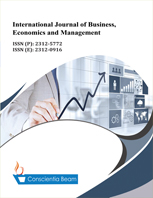Evolution of sugar exports in two centuries
DOI:
https://doi.org/10.18488/62.v10i2.3461Abstract
The research showed the trajectory of Brazilian exports and sugar prices between 1821 and 2020 (two centuries). The hypothesis of the research was that exporters' price forecasting errors affected their export forecasting errors in the period evaluated. The data were obtained from the Ministry of Development, Industry and Trade (MIDIC). Sugar prices were translated to 2020 Brazilian currency values (R$) and then to US dollars using the 2020 (R$/USD) average conversion rate. Autoregressive integrated moving average (ARIMA) models were used to forecast sugar exports and prices over the entire period. Geometric growth rates of exports and prices were estimated for each quartile using trend evaluation models. Dummy variables were used to test whether there were differences between the elasticities measuring the forecast errors of exports as a function of the forecast errors of sugar prices in each quartile. The estimated models proved to be parsimonious and robust from a statistical point of view. The hypotheses that prices and export quantities expanded at different rates in the four quartiles were confirmed and the estimated elasticities were shown to be statistically different suggesting that export forecasting errors are likely to be related to sugar price forecasts.

